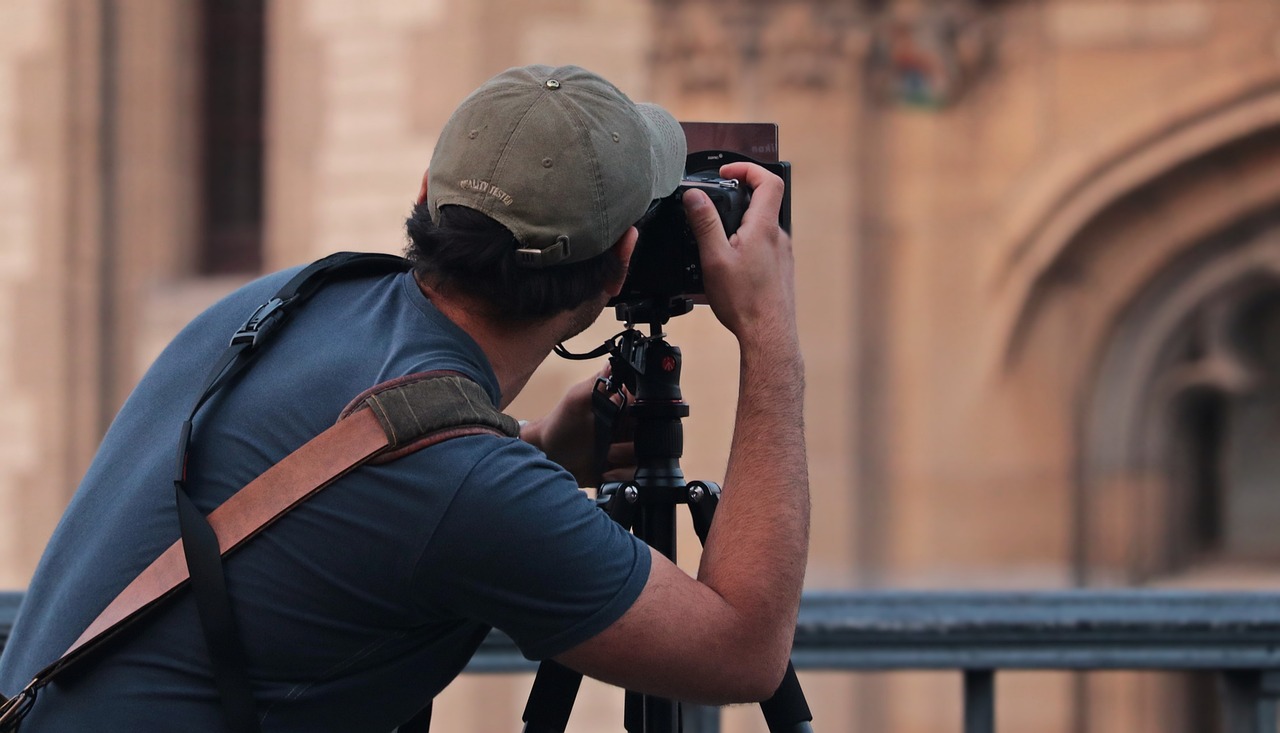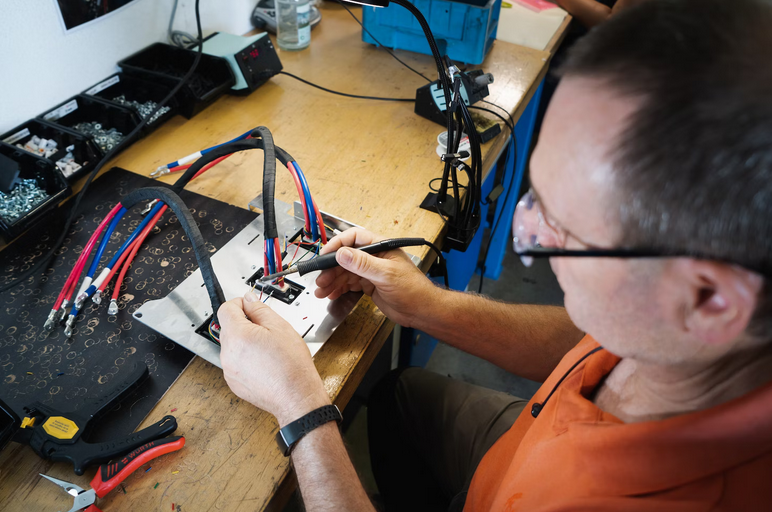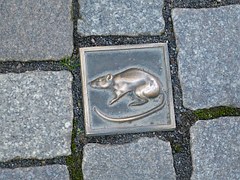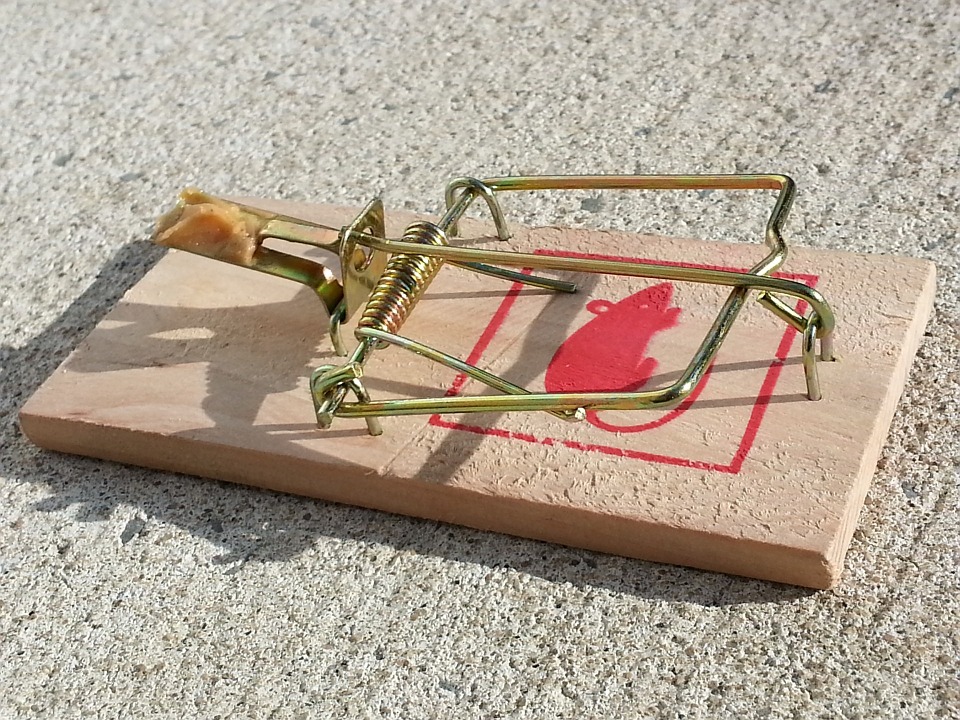Why Hiring a Professional Home Cleaner Is Worth Every Penny

Imagine coming home after a long day, only to be greeted by a sparkling clean space that smells fresh and inviting. Sounds like a dream, right? Well, it doesn’t have to be just a fantasy. Hiring a professional home cleaner can turn that dream into your reality. While some might think of cleaning as an easy task, the truth is that keeping up with household chores can often feel overwhelming. Life gets busy, and sometimes you need a helping hand to maintain the sanctuary of your home. Investing in professional cleaning services kepong not only frees up your precious time but also transforms your living environment in ways you may never have considered.
The Benefits of Hiring a Professional Home Cleaner
 Hiring a professional home cleaner offers numerous advantages that go beyond just sparkling surfaces. One of the most significant benefits is the peace of mind you gain, knowing your space will be thoroughly cleaned by someone with expertise. These professionals use high-quality products and equipment that can tackle dirt and grime more effectively than typical household supplies.
Hiring a professional home cleaner offers numerous advantages that go beyond just sparkling surfaces. One of the most significant benefits is the peace of mind you gain, knowing your space will be thoroughly cleaned by someone with expertise. These professionals use high-quality products and equipment that can tackle dirt and grime more effectively than typical household supplies.
Professional Expertise and Equipment
When you hire a professional home cleaner, you’re tapping into their specialized knowledge. These experts understand the intricacies of various surfaces and materials. They know which cleaning products work best for each situation. Equipped with high-quality tools, they tackle dirt and grime effectively. From advanced vacuum systems to eco-friendly solutions, these professionals come prepared. Their equipment often exceeds what most homeowners possess. Moreover, trained cleaners follow systematic processes that ensure thorough results. This approach minimizes the risk of damage while maximizing cleanliness. There’s an art to deep cleaning that only experience can teach.
Create a Healthier Living Environment
A clean home is more than just visually appealing; it significantly impacts your health. Dust, allergens, and bacteria accumulate in every nook and cranny over time. Professional cleaners know how to tackle these hidden hazards effectively. They use specialized techniques and products that are often more powerful than typical household supplies. This means they can eliminate harmful substances that might cause respiratory issues or allergies. Moreover, regular deep cleaning helps reduce the risk of infections. Germs thrive in unclean environments, spreading illnesses among family members.
Cost-Effectiveness in the Long Run
When considering the expense of hiring a professional cleaner, it’s essential to look beyond the immediate cost. Investing in cleaning services can be surprisingly economical over time. Think about all those hours spent scrubbing floors or dusting shelves. Those are hours you could spend on more enjoyable activities or even working extra shifts for added income. Moreover, professionals use high-quality products and techniques that can prolong the life of your furniture and carpets. This means fewer replacements and repairs down the line.
Find the Right Home Cleaning Service
When searching for the right home cleaning service, start by assessing your specific needs. Consider the size of your home and the type of cleaning required regular maintenance or a deep clean. Research local companies online. Read reviews to gauge customer satisfaction and reliability. Recommendations from friends can also lead you to trusted services. Don’t hesitate to ask potential cleaners about their experience, training, and insurance coverage. A reputable company should be transparent about these details. Request quotes from multiple providers but remember that price isn’t everything. Look for value in quality service rather than just low rates.
Frequently Asked Questions (FAQs) About Professional Home Cleaning Services
Many people wonder what professional home cleaning services include. Typically, these services cover dusting, vacuuming, mopping, and sanitizing surfaces. Some companies offer specialized cleaning for carpets or upholstery. Another common question is how often you should schedule cleaners. This really depends on your lifestyle and preferences. Weekly, bi-weekly, or monthly options are available to fit different needs. Concerns about the safety of products used can also arise. Reputable cleaning services use eco-friendly options that are safe for families and pets.
In Conclusion
Making the decision to hire a professional home cleaner can transform your living space and enhance your quality of life. The time saved allows you to focus on what truly matters, whether that’s spending time with family or pursuing hobbies. With their expertise and specialized equipment, these professionals provide a level of cleanliness that is hard to achieve on your own. This not only improves the aesthetic appeal of your home but also contributes significantly to a healthier environment for you and your loved ones.…




 This rule, without a doubt, can instantly enhance the visual appeal of your masterpiece; we’re talking about the images or videos you take. Instead of placing your subject smack dab in the center of the frame, imagine dividing your image into a grid with two horizontal and a couple of vertical lines. The intersection points where these stripes meet are key focal points that draw the viewer’s eye.
This rule, without a doubt, can instantly enhance the visual appeal of your masterpiece; we’re talking about the images or videos you take. Instead of placing your subject smack dab in the center of the frame, imagine dividing your image into a grid with two horizontal and a couple of vertical lines. The intersection points where these stripes meet are key focal points that draw the viewer’s eye. When you’re out capturing a scene with your camera, don’t forget about the importance of adding foreground interest. This technique involves incorporating elements in the front of your image to create depth and draw viewers into the photograph. Foreground interest can be anything from a flower or a rock to a person or an object that helps set the stage for the main subject of your shot.
When you’re out capturing a scene with your camera, don’t forget about the importance of adding foreground interest. This technique involves incorporating elements in the front of your image to create depth and draw viewers into the photograph. Foreground interest can be anything from a flower or a rock to a person or an object that helps set the stage for the main subject of your shot.




 3PL stands for Third-Party Logistics, a type of service that manages all or part of the shipping process of goods. The company provides warehousing and transportation services to their customers, as well as any other necessary tasks such as packing and tracking shipments. Companies can use this third party to help them save time, money, and resources when it comes to shipping their products.
3PL stands for Third-Party Logistics, a type of service that manages all or part of the shipping process of goods. The company provides warehousing and transportation services to their customers, as well as any other necessary tasks such as packing and tracking shipments. Companies can use this third party to help them save time, money, and resources when it comes to shipping their products. Although there are many advantages to using a third-party logistics provider, there are also some drawbacks. These include:
Although there are many advantages to using a third-party logistics provider, there are also some drawbacks. These include:

 If you have a large family or group of friends, doing a Secret Santa can be a great way to save money. This way, you only have to buy one gift instead of multiple gifts. Set a spending limit for each person, and ensure everyone sticks to it. The Christmas holiday offers the best time for spending and gift-giving. However, with the current state of the economy, many people are struggling to make ends meet. If you’re worried about overspending this Christmas, try following some of these money-saving tips.…
If you have a large family or group of friends, doing a Secret Santa can be a great way to save money. This way, you only have to buy one gift instead of multiple gifts. Set a spending limit for each person, and ensure everyone sticks to it. The Christmas holiday offers the best time for spending and gift-giving. However, with the current state of the economy, many people are struggling to make ends meet. If you’re worried about overspending this Christmas, try following some of these money-saving tips.…
 Another critical factor to consider when choosing a digital marketing agency is reviews and testimonials. You want to make sure that you’re working with an agency that has a good reputation. So take the time to read online reviews and see what others say about them.
Another critical factor to consider when choosing a digital marketing agency is reviews and testimonials. You want to make sure that you’re working with an agency that has a good reputation. So take the time to read online reviews and see what others say about them. Finally, you also want to ensure that the digital marketing agency you’re considering has a well-designed website. This is important because it will show you that they’re serious about their work and capable of creating a professional and effective website for their clients. Take the time to look at their website and see if it’s something you would be happy with. If not, then you may want to consider another agency.
Finally, you also want to ensure that the digital marketing agency you’re considering has a well-designed website. This is important because it will show you that they’re serious about their work and capable of creating a professional and effective website for their clients. Take the time to look at their website and see if it’s something you would be happy with. If not, then you may want to consider another agency.
 What are you looking for in a
What are you looking for in a  There are a few things to keep in mind when downloading an app. First, be sure to download from a reputable source. The Google Play Store and the App Store are both excellent options. If you’re unsure about an app, do research before downloading it. It’s also good to have an antivirus program installed on your device. It will help protect you from malicious apps.
There are a few things to keep in mind when downloading an app. First, be sure to download from a reputable source. The Google Play Store and the App Store are both excellent options. If you’re unsure about an app, do research before downloading it. It’s also good to have an antivirus program installed on your device. It will help protect you from malicious apps.
 A paystub generator is a tool that allows you to create and print your pay stubs. They are often used by self-employed people or those who work for small businesses. The paystub generator will enable you to customize the information on your paycheck to be used as proof of income for many different uses.
A paystub generator is a tool that allows you to create and print your pay stubs. They are often used by self-employed people or those who work for small businesses. The paystub generator will enable you to customize the information on your paycheck to be used as proof of income for many different uses. There are drawbacks to using a paystub generator. Time and energy are wasted trying to create a realistic-looking paycheck stub. The labor and energy that makes real proof of employment can be avoided by simply hiring an HR professional. A paystub generator cannot produce all necessary forms, such as tax documents or W-time reporting materials. Sometimes it is not enough to create the paycheck stub and send it off in electronic format; other supporting documentation may be required.
There are drawbacks to using a paystub generator. Time and energy are wasted trying to create a realistic-looking paycheck stub. The labor and energy that makes real proof of employment can be avoided by simply hiring an HR professional. A paystub generator cannot produce all necessary forms, such as tax documents or W-time reporting materials. Sometimes it is not enough to create the paycheck stub and send it off in electronic format; other supporting documentation may be required.
 The first thing you need to consider when buying
The first thing you need to consider when buying  It is essential to note that people use magic mushrooms for different reasons. Though most people who are buying them online use them for recreational purposes, some purchase them for health and spiritual reasons.
It is essential to note that people use magic mushrooms for different reasons. Though most people who are buying them online use them for recreational purposes, some purchase them for health and spiritual reasons.
 It is not necessary for edibles to get you high, not unless you decarboxylate your bang since the THC present will not be active during the ingestion process. It will allow you to get the health benefits of marijuana without getting high. Numerous nutritional values can be found in the weed. Just like any green leafy foods, it is also rich in nutrients. Cannabis comprises nutrients like; vitamin K, vitamin C, calcium, foliates, and iron. Besides, its leaves are rich in antioxidants.
It is not necessary for edibles to get you high, not unless you decarboxylate your bang since the THC present will not be active during the ingestion process. It will allow you to get the health benefits of marijuana without getting high. Numerous nutritional values can be found in the weed. Just like any green leafy foods, it is also rich in nutrients. Cannabis comprises nutrients like; vitamin K, vitamin C, calcium, foliates, and iron. Besides, its leaves are rich in antioxidants.
 Convenience
Convenience Browsing through many cannabis stores will introduce you to a lot of cannabis products that you may not know they ever existed. While we know of cannabis as a therapeutic drug, most of us may only be aware of its powder, weed, and flower form.
Browsing through many cannabis stores will introduce you to a lot of cannabis products that you may not know they ever existed. While we know of cannabis as a therapeutic drug, most of us may only be aware of its powder, weed, and flower form.
 The form of the edibles itself rarely matters. I mean, what’s the big deal about having a cannabis-infused cookie instead of a brownie, anyway? What you should be concerned with is the type of cannabis extracts infused in the edible.
The form of the edibles itself rarely matters. I mean, what’s the big deal about having a cannabis-infused cookie instead of a brownie, anyway? What you should be concerned with is the type of cannabis extracts infused in the edible.  cosmetic procedure. As such, they end up in the hands of saloonist, who does not have the right skills for the operation. However, a hair transplant is a medical procedure that should be done by a certified doctor. Hair transplantation is a medical procedure that can only be done by a certified dermatologist.
cosmetic procedure. As such, they end up in the hands of saloonist, who does not have the right skills for the operation. However, a hair transplant is a medical procedure that should be done by a certified doctor. Hair transplantation is a medical procedure that can only be done by a certified dermatologist. One you have some clinics in mind, doing some research pays off. Look at the reputation of the clinic and the doctors. Customer reviews can give you a good picture of what to expect. When doing this, you should look keenly at the safety and quality of the services offered by the clinic. Here, it about getting a dermatologist that will assure you of success and not just a cheap price.
One you have some clinics in mind, doing some research pays off. Look at the reputation of the clinic and the doctors. Customer reviews can give you a good picture of what to expect. When doing this, you should look keenly at the safety and quality of the services offered by the clinic. Here, it about getting a dermatologist that will assure you of success and not just a cheap price. d to be certain on what you are planning to purchase from online. Thus, you should be definite about the brand or type of wine. In this way, you will easily find the best sources. Nowadays, there are many wineries, which sell their brands online. Thus, you will find it easy to buy genuine wines at lower prices.
d to be certain on what you are planning to purchase from online. Thus, you should be definite about the brand or type of wine. In this way, you will easily find the best sources. Nowadays, there are many wineries, which sell their brands online. Thus, you will find it easy to buy genuine wines at lower prices. price plays a vital role in any particular business transaction. The internet offers you the resources you require to compare and check prices of different wines before buying. There are many websites online that compare prices among online wine suppliers. You can use all of them to your advantage. However, you should be cautious in this case – if a deal seems too good to be true, you should avoid such a site.
price plays a vital role in any particular business transaction. The internet offers you the resources you require to compare and check prices of different wines before buying. There are many websites online that compare prices among online wine suppliers. You can use all of them to your advantage. However, you should be cautious in this case – if a deal seems too good to be true, you should avoid such a site.
 at traps in places where the rats usually pass or go to feed (rats’ high activity areas). These places are usually referred to as rat highways. Most rats like areas where there is food, along walls, dark places and behind objects. The traps should also be positioned in such a way that it will be easier for the rats to trigger them.
at traps in places where the rats usually pass or go to feed (rats’ high activity areas). These places are usually referred to as rat highways. Most rats like areas where there is food, along walls, dark places and behind objects. The traps should also be positioned in such a way that it will be easier for the rats to trigger them.



 Capes have been in women’s dressing for a long time now. Artists make an effort every year to come up with new styles. The truth is, designer capes will never go out of fashion. Looking for new ways to wear the capes, is the best way to maintain glamor
Capes have been in women’s dressing for a long time now. Artists make an effort every year to come up with new styles. The truth is, designer capes will never go out of fashion. Looking for new ways to wear the capes, is the best way to maintain glamor The top reason here is, of course, they never go out of fashion. Capes are there for any occasion. They are unique and give your dressing an original look. Most people are afraid to wear capes in the streets only because people seldom wear them.
The top reason here is, of course, they never go out of fashion. Capes are there for any occasion. They are unique and give your dressing an original look. Most people are afraid to wear capes in the streets only because people seldom wear them.
 The size, appearance, and area of the photo booth are vital especially for a themed party. You certainly do not want the decorations of your event to go to waste because of a mismatching photo booth. Therefore, be sure to look at the booth before taking the plunge. You can either visit the inventory or ask the company for pictures.
The size, appearance, and area of the photo booth are vital especially for a themed party. You certainly do not want the decorations of your event to go to waste because of a mismatching photo booth. Therefore, be sure to look at the booth before taking the plunge. You can either visit the inventory or ask the company for pictures. The best way to determine if a particular rental company is right for you is to look at sample pictures. This way, you can analyze the quality of both camera and printing equipment before taking the plunge. You can request the sample pictures via mail or visit their shop.
The best way to determine if a particular rental company is right for you is to look at sample pictures. This way, you can analyze the quality of both camera and printing equipment before taking the plunge. You can request the sample pictures via mail or visit their shop.
 It is definitely true that no one wants to do business with a deceitful or perfidious company, but then it is also important that the company should go with the guidelines of Google. These guidelines have a lot to do with the transparency, honesty and fairness of the digital marketing agency.
It is definitely true that no one wants to do business with a deceitful or perfidious company, but then it is also important that the company should go with the guidelines of Google. These guidelines have a lot to do with the transparency, honesty and fairness of the digital marketing agency. The most appreciated benefit of online marketing that the era appreciates most is the fact that it allows a great level of transparency and tracking. It offers numerous benefits over the traditional media, one of them being the fact that the results in the media are easier to monitor and measure. A professional Google certified PPC expert and digital marketing agency should make sure that outlines and reports on a regular basis, the measures that it takes for the company branding.
The most appreciated benefit of online marketing that the era appreciates most is the fact that it allows a great level of transparency and tracking. It offers numerous benefits over the traditional media, one of them being the fact that the results in the media are easier to monitor and measure. A professional Google certified PPC expert and digital marketing agency should make sure that outlines and reports on a regular basis, the measures that it takes for the company branding.

 Things To Consider
Things To Consider

 The size and materials
The size and materials

 tive at night
tive at night
 This is one of the key benefits of leasing: It offers significantly lower monthly payments than buying. Let’s look at an example:
This is one of the key benefits of leasing: It offers significantly lower monthly payments than buying. Let’s look at an example: You must be 18 to enter into a legally binding credit agreement such as a car lease contract. You should inform your contract leasing provider in advance before taking on overseas car journeys as you require their permission.…
You must be 18 to enter into a legally binding credit agreement such as a car lease contract. You should inform your contract leasing provider in advance before taking on overseas car journeys as you require their permission.…

 Consider how long you have to pay back the loan. Know the maximum and the minimum duration. This will enable you to evaluate yourself and choose a period that suits you without straining your budget. Seek to know the method of payment; if you can write a cheque or deposit the money direct to the bank account. Also, take note if you have to pay the loan on a monthly basis, how much to pay every month and if you can pay off the loan in a lump sum. In case you pay off the loan it is good to know if interest will be waived or not.…
Consider how long you have to pay back the loan. Know the maximum and the minimum duration. This will enable you to evaluate yourself and choose a period that suits you without straining your budget. Seek to know the method of payment; if you can write a cheque or deposit the money direct to the bank account. Also, take note if you have to pay the loan on a monthly basis, how much to pay every month and if you can pay off the loan in a lump sum. In case you pay off the loan it is good to know if interest will be waived or not.…
 During promotional events and trade shows, every business wants to engage the public in a big way. The way to attract the attention of the customers during such occasions is by investing in one of the pop-up displays. They have a way of illuminating your advertisement in the easiest manner possible. You can opt for either the 10-feet or the 8-feet displays. Each can elevate the beauty of your showcase booth while at the same time enhancing the communication to your customer. The pop-up displays are big and bold. Hence people can see your advertisement from afar. Today, buying one can make the difference between a fruitful trade show and a failed one.
During promotional events and trade shows, every business wants to engage the public in a big way. The way to attract the attention of the customers during such occasions is by investing in one of the pop-up displays. They have a way of illuminating your advertisement in the easiest manner possible. You can opt for either the 10-feet or the 8-feet displays. Each can elevate the beauty of your showcase booth while at the same time enhancing the communication to your customer. The pop-up displays are big and bold. Hence people can see your advertisement from afar. Today, buying one can make the difference between a fruitful trade show and a failed one. The fabric pop up display gives you an opportunity to customize your exhibition. It has a hook and loop presentation options that use the same setup procedure. However, this alternative form of display is more straightforward and easy to do. You only have to take a few minutes to assemble it fully as well as disassembling. Another important fact you should have in mind is that the fabric pop up displays has additional enhancements. Such accessories include lighting options and the custom printed end cups.…
The fabric pop up display gives you an opportunity to customize your exhibition. It has a hook and loop presentation options that use the same setup procedure. However, this alternative form of display is more straightforward and easy to do. You only have to take a few minutes to assemble it fully as well as disassembling. Another important fact you should have in mind is that the fabric pop up displays has additional enhancements. Such accessories include lighting options and the custom printed end cups.…
 Sustain the standard
Sustain the standard
 mice is that it can be used both outdoors and indoors. This product is safe for both the human beings and the domesticated animals.
mice is that it can be used both outdoors and indoors. This product is safe for both the human beings and the domesticated animals. The mice trap is another effective way of dealing with these rodents. What you need on the mouse trap is bait which will attract the mice.
The mice trap is another effective way of dealing with these rodents. What you need on the mouse trap is bait which will attract the mice.
 is the source of power. The Noise from the hydraulic systems does not only come from the pump and the electric motor but also the pressure fluctuations in the hydraulic fluids and its components. The noise from the hydraulic system results from the physical vibrations or the pressure changes.
is the source of power. The Noise from the hydraulic systems does not only come from the pump and the electric motor but also the pressure fluctuations in the hydraulic fluids and its components. The noise from the hydraulic system results from the physical vibrations or the pressure changes. Last but not least, noise in the hydraulic systems comes from the pipes. They have different valves at various places that are intended to control the flow of the fluids.
Last but not least, noise in the hydraulic systems comes from the pipes. They have different valves at various places that are intended to control the flow of the fluids.
 Cinnamon is derived from the dried inner bark of cassia tree. It is one of the most used food spices in the world. It has a sweet and aromatic taste making it a useful component of curry and many baked goods, cakes, custards, fruit pies, cookies, and puddings.
Cinnamon is derived from the dried inner bark of cassia tree. It is one of the most used food spices in the world. It has a sweet and aromatic taste making it a useful component of curry and many baked goods, cakes, custards, fruit pies, cookies, and puddings. If you are buying herbs and spices by weight, don’t buy too much because most spices don’t maintain their flavor for long. Keep the dried herbs and spices in your kitchen away from heat and moisture. And when using dried herbs and spices to your recipe, make sure that you do it early in the cooking process so that they can change and develop a flavor. When adding fresh herbs do it towards the middle or end of the cooking process to retain their flavor.…
If you are buying herbs and spices by weight, don’t buy too much because most spices don’t maintain their flavor for long. Keep the dried herbs and spices in your kitchen away from heat and moisture. And when using dried herbs and spices to your recipe, make sure that you do it early in the cooking process so that they can change and develop a flavor. When adding fresh herbs do it towards the middle or end of the cooking process to retain their flavor.… Before leaving your home ensure that you keep all your appliances are working and in good condition. Switch off those machines that are not useful when away from home. If one of your machines is not functioning well, make sure that you hire a technician to repair it on time. Don’t also forget completely to clean all of your appliances like fridges and computers because if there is a lot of dust on such machines, it may result in failure.
Before leaving your home ensure that you keep all your appliances are working and in good condition. Switch off those machines that are not useful when away from home. If one of your machines is not functioning well, make sure that you hire a technician to repair it on time. Don’t also forget completely to clean all of your appliances like fridges and computers because if there is a lot of dust on such machines, it may result in failure. Replace those high consumption lights with energy saving lights. It will help you cut over thirty percent of your energy costs. It should be a priority to change the lights to energy saver.
Replace those high consumption lights with energy saving lights. It will help you cut over thirty percent of your energy costs. It should be a priority to change the lights to energy saver.